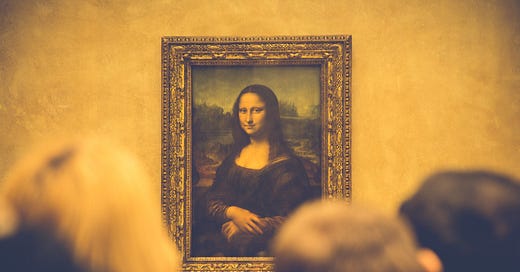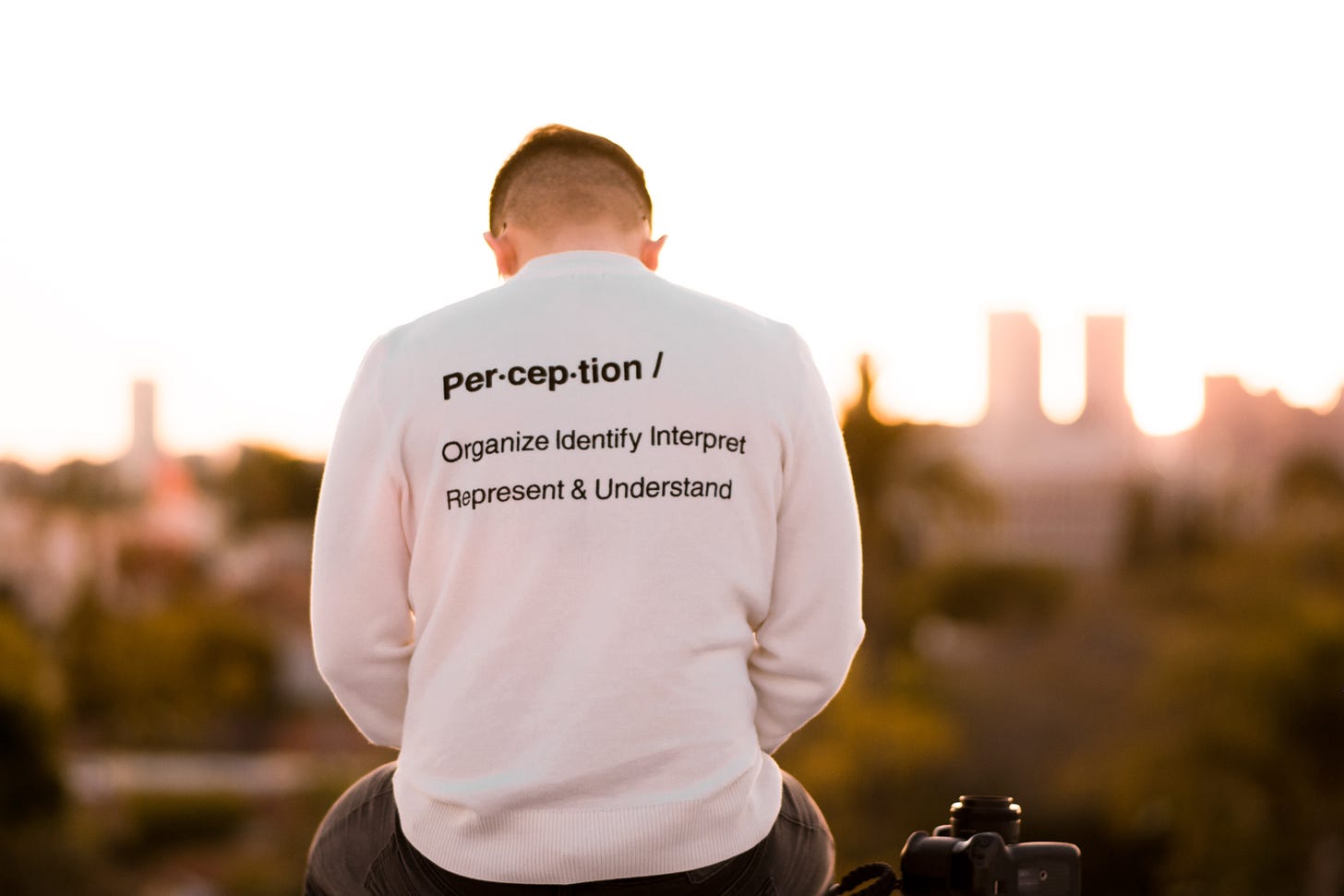7 Design Lessons from Leonardo da Vinci
It is hard not get awed by the superlative genius of Leonardo da Vinci, whose design principles are still relevant for 21st century artists and designers.
The Mona Lisa, Leonardo da Vinci’s Most Mysterious Painting
Her tricky smile and timeless allure have inspired academic study and conspiracy theories for over five centuries. But the story of Leonardo da Vinci's most perplexing portrait is far more exciting than it looks.
Leonardo da Vinci's Mona Lisa may be 'the world's most famous painting,' but almost everything about it is a mystery. We don't know precisely when it was painted, we don't know for certain who she is, and as we stare at her puzzling features for the umpteenth time, we are inclined to ask ourselves: what is it about her that is so alluring? And the most interesting part, why did Da Vinci leave it half-finished?
While the above questions are still pretty much unanswered, we know that it took Leonardo da Vinci 12 years to paint her lips. Yes, 12 years and countless iterations. This shows the commitment and dedication that went into creating the most iconic painting of all time. This also gives us an insight into the workings of the greatest designer who ever walked on this planet.
And I will not be wrong if I say the world has never really had another Leonardo da, Vinci. Besides designing, he was an architect, musician, mathematician, engineer, inventor, expert in anatomy, geologist, mapmaker, and botanist. In short, he was a genius.
In his book How to Think Like Leonardo da Vinci, Michael Gelb succinctly explains the seven design principles of Da Vinci that made him such a creative person. Gelb explores how Da Vinci approached life and, most importantly, lays it out for designers in a practical framework for self-improvement.
· Curiosità
· Dimostrazione
· Sensazione
· Sfumato
· Arte/Scienza
· Corporalitá
· Connessione
Curiosità
Curiosita is an insatiably curious approach to life and an unrelenting quest for continuous learning.
Leonardo possessed endless curiosity about how everything around him worked. He was an avid writer and note-taker. He had a journal everywhere he went. And while he appreciated learning from others, he relied more on his personal experiences and the little things he discovered about everything.
As Leonardo himself says.
“My intention is to consult experience first, and then with reasoning show why such experience is bound to operate in such a way.”
He followed the rabbit hole of his curiosities. He also regularly drew fantastic ideas that were impossible to realize during his lifetime. Leonardo’s to-do list gives us a glimpse into his daily pondering and the level of curiosity that was imbibed within him.
As designers, we need to give vent to our curiosities and question everything. The only way to solve problems our customers didn’t even know they had, is to be relentlessly curious.
Dimostrazione
Dimostrazione is committed to testing knowledge through experience, persistence, and a willingness to learn from mistakes.
An example of this principle can be seen when Da Vinci wrote a letter to the ruler of Milan describing his skills. He proclaims his ability to “design bridges, waterways, cannons, armored vehicles, and public buildings in ten paragraphs.” And as a footnote in the eleventh paragraph, Leonardo wrote, “likewise, in painting, I can do everything possible.”
And this was possible because of his endeavor to test and experiment with everything constantly. He never took anything for granted and always believed in changing the status quo of things. He was immensely willing to learn from mistakes and challenge his potential every day. For him, life was a series of amazing hypotheses every day, and we should be testing them.
As designers, we must challenge ourselves to create amazing work that will stand the test of time. Good design is always a work in progress with much to learn.
Sensazione
Sensazione is the continual refinement of the senses, especially sight, as the means to enliven experience.
As Da Vinci rightly said.
“There is nothing in all nature without its reason; if you know the reason, you do not need the experience.”
Da Vinci was incredibly inspired by nature around him; the more he honed his senses to glean the designs from nature, the more heightened his genius became. He marveled at things that we may find banal or take for granted in our daily lives.
And to discover something new, he always resolved to pursue the overlooked, mundane aspects of nature. The very idea of nature for him was rooted in utility. Everything in nature, from a bumblebee to that a rainbow, has a defined purpose, and nothing is wasted just the heck of it.
As designers, it is in our interest to glean inspiration from these fantastic creations and use them effectively in our digital work. It can not only make our designs effective and beautiful, but it also gels into with the natural psychology and expectations of the user, causing them never to be rejected in the first place.
Sfumato
Sfumato is a willingness to embrace ambiguity, paradox, and uncertainty.
Da Vinci rightly said.
“The greatest deception men suffer is from their own opinions.”
Leonardo was once tasked with arranging a feast from the Duke of Milan’s kitchen. Leonardo designed conveyor belts to bring food to preparers faster, a large oven to cook at higher temperatures than normal, and a sprinkler system for safety. He also invited local artists to carve individual entrees into works of edible art.
Needless to say, it was a disaster. The conveyor belts were slow. The cooks burnt the food in the oven, and the sprinklers ruined the food. The Duke was angry.
But Da Vinci was not discouraged. He approached each of his ideas without preconceived notions and was open to positive and negative feedback. He thrived on ambiguity and persisted till he was clear with the entire process.
As designers, we must approach new ideas with an open mind, trying to understand rather than judge them. Let experience be the best judge.
Arte/Scienza
Arte/scienza is the development of the balance between science and art, logic and imagination.
The right part of our brain is a detailed oriented scientific brain, while the left part is imaginative and art-oriented. Good design that delights when it is visible is the art part.
Good design that delights when it is invisible is the science part. Da Vinci was a big believer in using both parts of your brain. He did this in his notebooks by tying ideas with drawings. Specifically, he was the original mind-mapper who believed in mixing beauty with utility.
And good designers realize that design is the science of art. It is a science because what we create should be useful to others. It is an art because it creates something that evokes human emotions and causes a reaction.
Corporalitá
Corporalita is the cultivation of grace, ambidexterity, fitness, and poise.
Da Vinci was an incredibly athletic person and firmly believed that physical fitness and exercising are very important to keep the creative juices flowing. From early on, he realized that if he wanted his mind to perform at optimal levels, his body also had to be in top shape. He also paid special attention to his diet, sleep cycle, and also his hygiene habits to maximize his productivity.
And In her book The Creative Habit: Learn It and Use It for Life, legendary choreographer Twyla Tharp also reiterates the importance of fitness by taking the example of another famous creative personality, Beethoven.
Although he was not physically fit, Beethoven would start each day with the same ritual: a morning walk during which he would scribble into a pocket sketchbook the first rough notes of whatever musical idea inevitably entered his head. And having transported himself into his version of a focus zone during the walk, he would return to his room and get to work.
The key is to pick up any low-intensity exercise (walking, running, etc.) that provides the opportunity for mind-wandering, and allowing the mind to wander helps facilitate creative thinking and problem-solving.
Connessione
Connessione is a recognition of and appreciation for the interconnectedness of all things and phenomena.
Simply put, it is the identification of patterns in everyday life and our ability to interpret them in multiple ways. Leonardo’s mind wandered across multiple disciplines of the arts, sciences, engineering, and humanities.
His knowledge of how light strikes the retina helped him to create the perspective in The Last Supper. He knew that art was a science and that science was an art. He always established connections and new utilities for anything beyond the known functionalities.
The lesson here for designers is to avoid functional fixedness. Functional fixedness is the inability to realize that something known to have a particular use may also be used to perform other functions.
When one is faced with a new problem, functional fixedness blocks one’s ability to use old tools in novel ways. In short, you get stuck (i.e., fixed) on that sole specific object function, so you’re inhibited from thinking of any more creative uses for it to help in your current situation.
The key to escaping the trap of functional fixedness is thinking of objects in more generic terms. This involves first breaking things down into their component parts with more generic descriptions (e.g., a candle has a wick, which qualifies as a string in general), then ask yourself how you can use that component to solve the problem (e.g., how having a string can help).
Thus, thinking more plainly in such generic descriptions helps you move toward generating effective solutions and creative ideas.
Sources
· How to Think Like Leonardo da Vinci- Michael Gelb
· The Creative Habit: Learn It and Use It for Life - Twyla Tharp












Hi Ravi, very interesting post! I'm in the middle of my own posting about this book, which I plan to conclude this week. Fun to see different takes on similar material. Cheers!